Enjoy over 280 years of American architectural history in the Lehigh Valley. Vernacular log structures, a Lenape wikewam, graceful Victorian era mansions, industrial warehouses, and much more tell the story of architecture in the Lehigh Valley area. Visit the following sites:
1803 House
The 1803 House is very unique for the time period in many ways. The Federal-style home preserves the architecture of the Moravian culture of colonial Pennsylvania and embodies the lifestyle of colonial America.
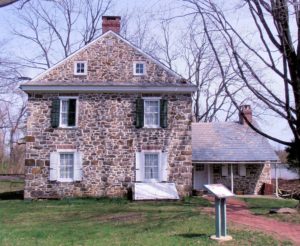
Emmaus Historical Society
Learn the history of Emmaus, an old Moravian village. In 1742, a small group of Moravians moved ten miles southwest of Bethlehem to a place that the Lenape people called Macungie, or “feeding place of bears.” There they built cabins and a log church in a settlement they named Emmaus, after the place where Jesus appeared to two of his disciples on the day of his resurrection.

Forks Township Historical Society
Forks Township Historical Society 1760’s Log Cabin is located at the Zucksville Road entrance of Forks Township Park. The cabin was the initial home of German immigrants Michael and Gertrude Fraes [Frace] built on Penn Patent Tract #185 in 1766 and remaining in the family for several generations. By 1940, the farm where the cabin was then situated off Frost Hollow Road was purchased by J. Ludlow White and wife naming the property Walnut Lane Farm as there were several walnut trees lining the farm lane. Several of those trees remain to this day along the former lane, now part of the bike path.
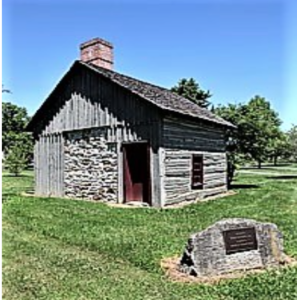
Governor Wolf Historical Society
As part of the early Scots-Irish Settlement, in now “East” Allen Township, our 3 ½ acre site consists of three early buildings. Purchased in 1958, the 1785 Wolf Academy is a one room limestone structure built as a school of higher learning for the young men of the area. The 1795 Ralston-McKeen House is a stone Federal home with 7 working fireplaces. Its beautiful center hall has its original 18th c. stairway, and the home retains most of its original floors and doors. Work is ongoing to restore the kitchen wing.Built in the late 1800s, the Monocacy School began as a one-room schoolhouse, with two additional classrooms added in the early 20th century. This building houses our museum, restrooms, and meeting room.
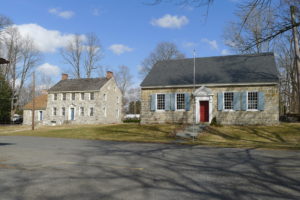
Historic Bethlehem Museums & Sites
Step back in time in the Gemeinhaus, the oldest building in Bethlehem. Dating back to 1741, the 5-story log structure is believed to be the largest 18th century log structure in continuous use in the United States. Built in the German Colonial style, the original floorplan of the building remains largely unchanged.
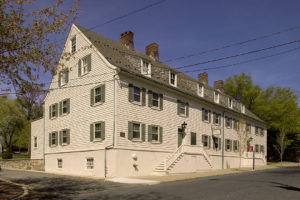
Jacobsburg Historical Society
The Pennsylvania Longrifle Museum, housed in the historic Henry Family Homestead built in the 1750s, the 1832 J. Joseph Henry House Museum, a magnificent Philadelphia style townhouse lived in by five generations of the Henry family, and the original Nicholas Hawk Log Cabin Gunshop built in 1801, relocated from the Hawk family farm in Gilbert PA and restored on the Boulton Historic Site.
Nicholas Hawk (1782-1844), an early American gunsmith renowned for his fine craftsmanship of Pennsylvania longrifles, purchased the original Hawk family homestead in Gilbert, Monroe County in December 1801. The Hawk family homestead and 12’3” x 15’3” log cabin gun shop was located just across the Blue Mountain from the site of the Henry Gun Works at Boulton. Hawk had purchased rifle barrels from Boulton, and some believe that he may have apprenticed in the Henry shop. After the Hawk family homestead and log cabin gun shop was sold to new owners in 2003, the structure was threatened with demolition. Thankfully the new owner agreed to give the shop to the Jacobsburg Historical Society, provided it was moved off the original property. Volunteers from Jacobsburg Historical Society dismantled the 200 year old gun shop, timber by timber, and transported it to Boulton. After several years of fundraising activities, reassembly and restoration of the Nicholas Hawk Gun Shop was completed here in 2008.

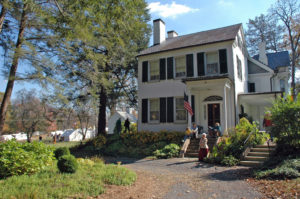
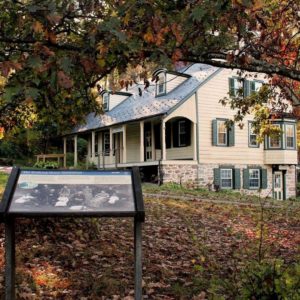
Lower Macungie Township Historical Society
Log Cabin in Wescoesville – The circa-1792 Bortz log house with its pre-1840 timber frame addition, located at Wescosville Park, is a typical example of a Pennsylvania German log structure. The log homes in this area were not “rustic” and “crude” like log cabins in other parts of the country, but rather were as comfortable as the larger stone homes being built at the same time. In 1989, the log house, located along busy Route 222, a former King’s Highway, was moved a hundred yards west into the township park, where it is being maintained by the historical society.

Moravian Historical Society
Completed in approximately one month, the log structure known as the Gray Cottage was finished in 1740 and, along with the First House, became the primary living quarters for the Moravians before the Whitefield House was completed in 1743. The Gray Cottage was constructed to be utilized by the entire community, rather than a single family. In 1743 when the Moravian School for Boys moved into the Cottage, it became the first school in Nazareth and housed a teacher, his wife, an assistant, and ten boys. In 1755, it became the home of the widows of Nazareth and Bethlehem, until the Widows’ House was built in Bethlehem in 1768. The building has been repaired and restored several times in its history. It was listed on the U.S. National Register of Historic Places on May 1, 1980. The latest major restoration was in 2019 when it was renovated from a private residence to a space that is now accessible to the public.
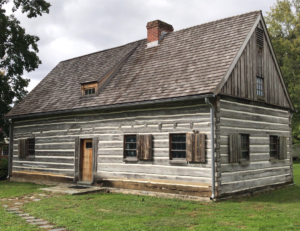
Northampton County Historical and Genealogical Society
The Northampton County Historical and Genealogical Society’s 1807 Jacob Nicholas House is a German Colonial stone “bank” house built into the side of a steep hill which rises along Ferry Street and continues up 5th Street. The original lot it sits upon (drawn up by Williams Parsons as requested by the Penn family) changed ownership twice prior to the purchase and construction of the building by Jacob Nicholas. Jacob lived in his home with his wife Margaret and their seven children. The house was sold many times over the years and was most often inhabited by tenants who made little physical changes to the property. Uniquely because of this, it retains approximately 90% of its 213-year-old historic fabric. The original stone façade with window lintels containing the iconic symbol of the Commonwealth of Pennsylvania, a keystone, has been lovingly restored and preserved. Most of the original interior brick floor, door hardware, and decorative woodwork remains. The ground level’s fireplace with beehive oven is also original. The root cellar in the rear of the ground level exposes the bedrock the structure is built into. The Northampton County Historical and Genealogical Society’s 1753 Bachmann Publick House was built by Jacob Bachmann and his wife at the corner of Fermor (now Second) and Northampton Streets in the German Colonial style. The structure was a gathering place for Colonial-era residents and visitors to stay the night, eat a meal, imbibe, exchange news, or to conduct meetings. A large room on the second floor served as the first Court of Northampton County from 1753 to 1766. It is a beloved, carefully restored structure and is listed on the National Register of Historic Places.

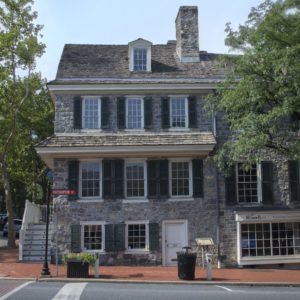
The Shelter House Society, Emmaus
This primitive oak and chestnut log cabin was built on the northern slope of the South Mountain. The structure is believed to be the oldest continuously occupied structure in the Lehigh Valley, as well as the oldest building in Emmaus. The first story of the building was built circa 1734. In 1741, a three-room second story and a two-story annex were added. Mud, straw and horse hair were used as “chinking” between the logs of the cabin.
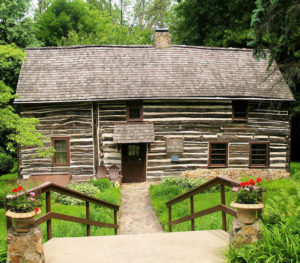
Slate Belt Heritage Center
Slate Belt Heritage Center is a town hall constructed to house civic services like the fire, police, town council and borough offices with many locally crafted decorative features like slate fireplace surrounds.
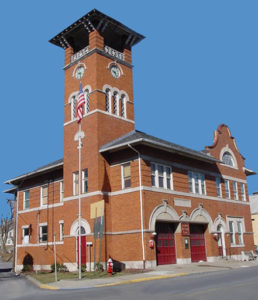
Looking for a full Log Cabin Tour? Visit our friends at www.discoverlehighvalley.com/things-to-do/tours/log-cabin-trail/